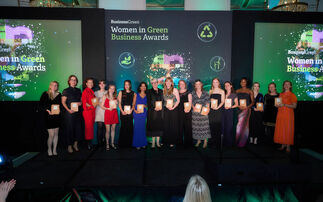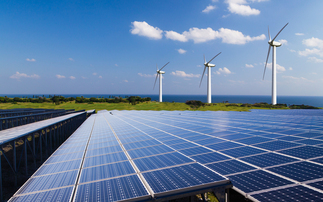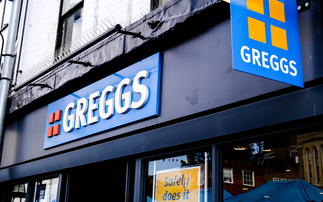The SDGs are epic in their ambition and reach, and businesses have a critical role to play in their delivery - the new BusinessGreen SDG Hub aims to help navigate this exciting new agenda
Did you know the world has an internationally agreed strategy? Had you heard there's a blueprint, a roadmap, a universally endorsed vision for how world leaders would like to see us develop as a civilisation? I know, it doesn't always feel like it, right? But there is, and it is set to have a far bigger and more profound impact on the global economy than even many of its advocates realise.
The UN Sustainable Development Goals (SDGs) are three years old today, but their implications for business, investors, and the economy as a whole are only just starting to be understood. And those implications are huge. Through 17 goals, 169 targets, and one celebrity infused video the international community has set out its priorities for the coming decade and beyond. It turns out we are going to need an industrial, technological, and economic revolution, unprecedented in human history in terms of its pace and scale.
Today BusinessGreen launches a major new service to help businesses, investors, and green economy stakeholders navigate these goals and seize the opportunities presented by this all-encompassing global development agenda.
Supported by banking giant BNP Paribas, the BusinessGreen SDG Hub will provide a unique, editorially independent, free-to-air resource that will explore every aspect of the SDG roadmap and the myriad new markets and commercial risks they point to.
Each month we will explore one of the 17 SDGs - starting with zero poverty and zero hunger before journeying through the various goals covering everything from climate action to sustainable consumption and production, and concluding with the goals covering the pursuit of peace and justice, and the need for partnerships.
It is a daunting undertaking, because the SDGs are a dauntingly complex endeavour, covering everything from marine biodiversity and soil erosion to equal rights legislation and prison reform. The temptation is for businesses and investors to look at the brightly coloured UN logos, the matrix of performance indicators, and the patchwork of policy aspirations and firm development targets, and conclude this is an agenda for governments and charities - a continuation of the Millennium Development Goals (MDGs) that briefly animated world leaders and pop stars before the financial crash hit in 2008. An admirable project, no doubt, but not something to concern the hard-nosed world of international finance and commercial expansion.
But there is a growing school of thought amongst business leaders, investors, and development experts alike that the SDGs cannot be ignored. More than that, many of the world's leading businesses have realised there is value in actively embracing the SDGs and using them to guide and shape their own corporate strategies. As we report today, a new survey of leading businesses working with the Business for Social Responsibility (BSR) (admittedly a self-selecting sample, but one containing many of the world's leading brands) reveals 71 per cent are now drawing on the SDGs to set their own internal targets.
The reasons for this corporate engagement with the SDGs are manifold. At the simplest level many business leaders have recognised that after a post-crash decade of economic volatility, escalating climate impacts, and incipient nationalist protectionism it is all but impossible to run a successful business in a failing society. Ultimately, unsustainable development is unsustainable. Eradicating extreme poverty, ending hunger, and delivering sustainable cities and clean energy will not just result in desirable development outcomes, it will also drive economic growth and open up massive new markets.
As the influential economist Lord Nicholas Stern likes to say the whole concept of sustainable development agenda is defined by endogeneity. That is to say the decisions we take impact upon the environment in which those decisions play out. Consequently, the "only growth story on offer" is a green and sustainable growth story.
Moreover, at an operational level the SDGs provide a very useful framework for businesses and investors to minimise environmental and policy risks while exploiting the opportunities that will result from the green industrial revolution. As evidenced today by the launch of the World Benchmarking Alliance's SDG initiative, investors in particular are rushing to utilise the SDGs to inform indices or shape investment strategies, hypothesising (based on a growing track record) that companies that support the SDGs tend to enjoy lower risk profiles and higher long term returns.
As Kevin Moss of the World Resources Institute (WRI) told BusinessGreen as part of a major investigation that we will run later this week, the SDGs can be boiled down to a relatively simple concept that business leaders should be pretty familiar with. "For me the goals coalesce into three groups," he explains. "What we want to achieve for society, that's areas like health and nutrition and ending poverty; goals that define the boundaries within which we have to achieve those aims, that's the environment goals and the planetary resource goals; and then there are signposts to how we achieve it, that's areas like peace and justice, equality, partnerships, and sustainable consumption... The resource boundaries we can't cross define our safe operating space, while the other goals set out what we want to achieve. That basically adds up to a set of defined design criteria, and companies are very good at competing in an operating space once it is clearly defined."
Most of all though, the SDGs are a gift to corporate planning. Like the Paris Agreement and its long term goal for the creation of a net zero emission economy, the SDGs are an invaluable sign post highlighting the direction of travel along which policymakers and the public want to proceed. There will no doubt be plenty of bumps along the road, including many from the governments that have themselves signed off on this agenda. But here is further evidence that over the next 15 years it is clean energy, sustainable agriculture, greener cities, equal rights, biodiversity protection, resource efficiency, and climate action that will dominate the global policy conversation. The opportunities that should result are obvious, as is the minefield of stranded asset risks that will emerge as governments and businesses pursue genuine sustainable development.
The challenge, therefore, for businesses and investors is how to navigate the political, public, and market trends that will result from the SDGs. How to maximise your contribution to meeting the goals while guarding against the risks they could present to your current business models. How to identify where the real SDG-related opportunities lie and exploit them in a way that supports all the goals, and not just the ones where an organisation may have a direct impact.
That is where the new BusinessGreen SDG Hub comes in, providing accessible information and analysis on the business implications of the goals, as well as in-depth investigations into how leading businesses are seizing the opportunities they present. In the coming weeks and months we will take a microscope to this most important of corporate trends and ask how leading businesses can drive the kind of sustainable development that holds out the promise of transforming the world for a better within a generation.
The world does have a strategy. Like all good strategies it is well-intentioned, ambitious, and facing enormous challenges. The onus is now on the business community to deliver.










